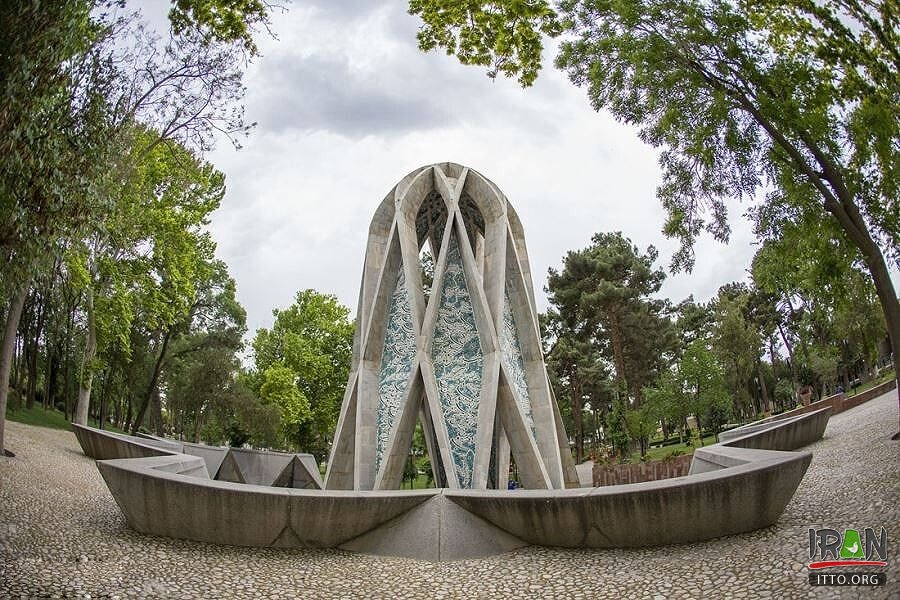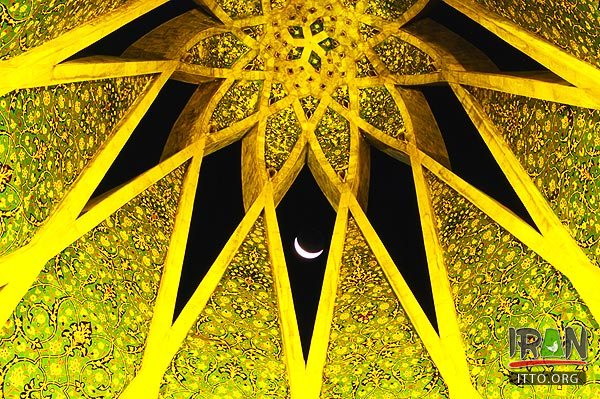Neyshabur: dazzling city of the ancient world
Neyshabur turquoise stone has always been very famous and the ring with turquoise jewel is one of the most expensive and valuable souvenirs of this city.

In ancient times, Neyshabur was one of the most important cities in Iran and the homeland of many great men of science, art and culture and today it hosts tourists who go to visit the relics of that period.
Hakim Omar Khayyam is one of the prominent scientists and poets of the fifth century AH. He has held a high scientific position among scientists. However, Khayyam's quatrains have played a prominent role in his fame.
No special building was built as Khayyam's tomb from the time of his death until the early fourteenth century AH. It was that time when a proposal was made to build a tomb worthy of this scientist and poet, and the National Works Association took responsibility for it. Professor Houshang Seyhoun, a prominent Iranian architect, was chosen as the designer of this building.
Finally, the construction of the tomb was completed in 1341 and it was officially opened in April 1342.
In designing the construction of Khayyam's tomb, three important points have been considered, and that is mathematics, poetry and astronomy. In fact, the architect's attempt was to crystallize these three important aspects of Khayyam's character in his tomb. The building of Khayyam's tomb has ten bases. Given the importance of the number ten as the first two-digit number and the base of the main numbers, this is a kind of symbol of Khayyam's activities in the field of mathematics. At the collision of the building's blades, you can also see star-like shapes that represent Khayyam's astronomical face. Some parts of the building have been designed by quatrains of Khayyam which have been written with a suspension line.
Khayyam's specialized museum is located next to his tomb, which displays observational and astronomical instruments, various types of pottery and manuscripts, and paintings related to Khayyam.
Neyshabur turquoise stone has always been very famous and the ring with turquoise jewel is one of the most expensive and valuable souvenirs of this city.
Around Khayyam's tomb, there are several shops that, in addition to displaying works of art with turquoise, allow tourists to buy authentic Neyshabur souvenirs.
The tomb of Attar and the tomb of Kamal al-Mulk are also located near the tomb of Khayyam.

Omar ibn Ibrahim Khayyami Nisaburi, known as Khayyam, is one of the Persian prominent scientists and cultural characters. He was a philosopher, mathematician, inventor, astronomer, scholar, faqīh (Islamic jurist), historian, and omniscient in his time. Although he was more a scientist than a literary person, he is world-famous because of his Rubáiyát (quatrains). This poetry became widely known in an English translation by Edward FitzGerald. There is no enough information about Khayyam’s life. The remained documents said he was born in 439 AH., he corrected what is known as Jalali calendar. His scientific works include the correction of the solar calendar by Sultan Malik-Shah’s decree, setting up an observatory in Isfahan, inventing a balance to estimate the specific weight of the objects, and doing some researches in mathematics.
According to his contemporary historian, Bayhaqi, Khayyam and his ancestors were from Nishapur. In philosophy, Khayyam is considered intellectually to be a follower of Avicenna. He mastered philosophy, mathematics, astronomy, and also linguistics, fiqh (Islamic jurisprudence), and history. Khayyam lived in an era where the socio-political situation was chaotic and disordered. Not being capable to rule their country, the rulers were obliged to choose the viziers and to give them executive affairs authority. But these unfortunate viziers were sentenced to death due to the simplest excuses and in this chaos, the determinism advanced and freethought lost the power. There was a huge group of fanatics during this time, who disagreed to all sciences, even mathematics, medicine, astronomy, music, and so on, and they considered the persons who studied such science as zindiq and atheist.
Khayyam sometimes represented dissatisfaction and objection in his Rubáiyát:
“We saner are, O strictest Jud! than you!
With all the fill yet leave the flood to you!
We shed the gore of vines and you of veins:
Now are we keener on the blood or you?!”
Or:
“If drink you not, do not the drunk deprave!
Put forward no deception, hoax, and rave!
Do not go vain that you deal not in wine:
To what you knead poor wine is just a knave!“
It seems that he concealed his poems because of the fanaticism and Khayyam revealed them to just a group of his intimate friends. Excluding repeated rubáiyát(quatrains), it remains 57 rubāʿī (quatrain), which can be certainly attributed to Khayyam. His language is natural and simple and he did not follow anyone in composing his poems. Being gifted and talented as a poet, Khayyam expressed his philosophical viewpoints by poetry.
Khayyam passed away between 506-530 AH. In 1341 SH, the Society for the National Heritage of Iran established a memorial monument for this magnificent philosopher, which was inspired by his ideas.

